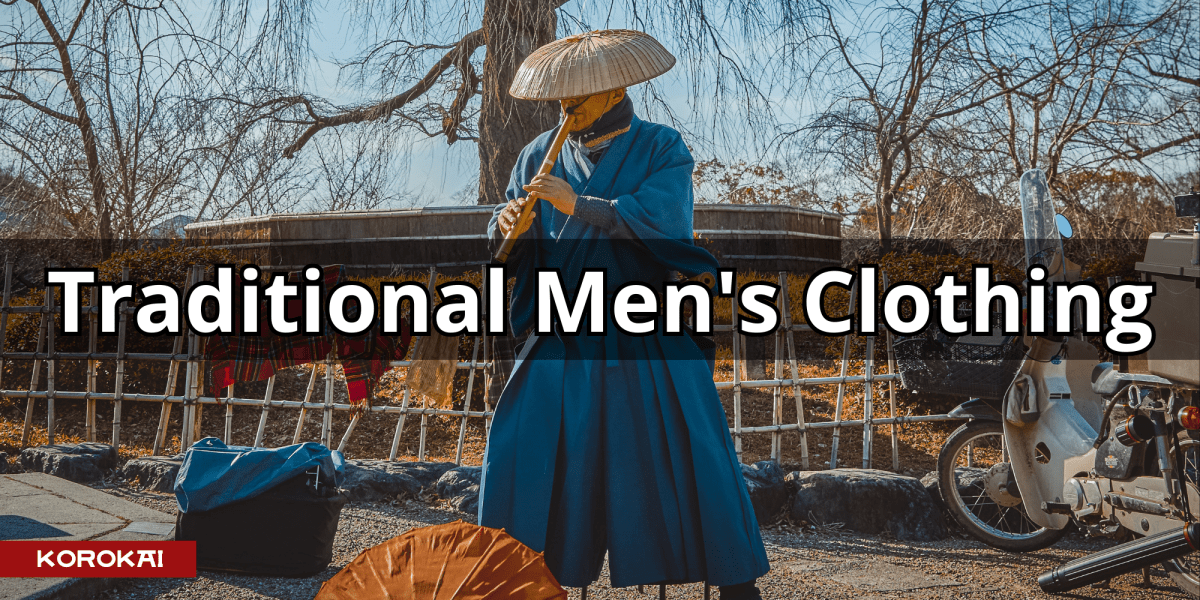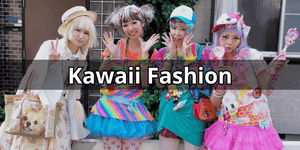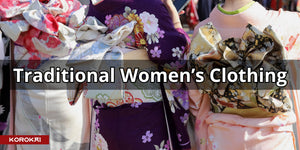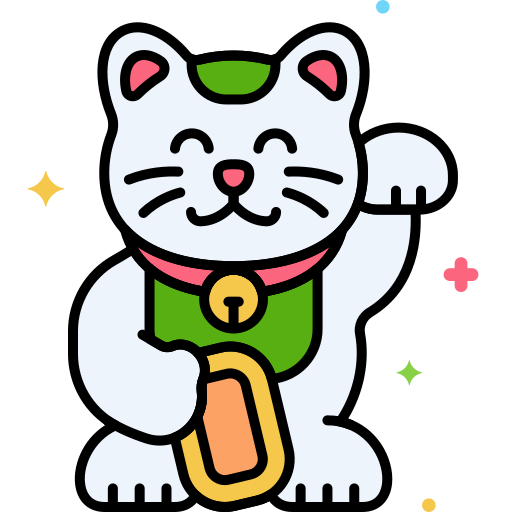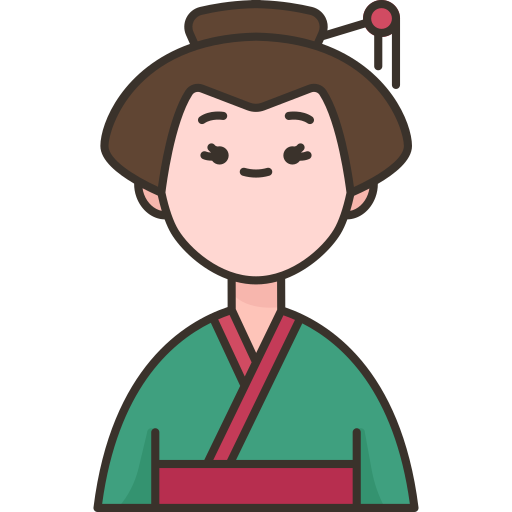Traditional Japanese men's clothing reflects a rich culture and fascinating history, which has survived the centuries to provide us with a unique and timeless fashion. Although modern fashion has largely penetrated everyday life in Japan, traditional clothing continues to be worn with pride at ceremonies, festivals and cultural events. In this article, we will explore the world of traditional men's clothing, highlighting the beauty, functionality and symbolism of these iconic garments.
1. Happi

Happi is a short, straight jacket with wide sleeves, usually worn over a kimono or yukata. Happi is often made of cotton and features bright patterns and colors, reflecting a festive and joyful spirit. Happi is traditionally associated with Japanese festivals (matsuri). It is often worn by groups of people participating in parades or dances during these events.
The designs on the happi may represent the emblem of a family, a group or a shrine, helping to reinforce identity and solidarity within the group. To wear a happi, it is put on like an ordinary jacket, usually leaving the front open for comfort and freedom of movement. In short, the perfect traditional garment to be worn at festivals to express joy and belonging to a group.
2. Hakama

Hakama is a kind of wide pleated pants made of skin-friendly fabrics like cotton and worn over a kimono. Historically, the hakama was worn by samurai and nobles, but it has become more accessible over time. Today, the hakama is often associated with martial arts, where it is worn by practitioners of disciplines such as aikido, kendo and kyudo.
The hakama is also distinguished by its seven folds, representing the seven virtues of bushido, the samurai code. The folds are held in place by an adjustable belt system that allows the hakama to be secured to the waist. In short, the hakama is an emblematic element of Japanese culture, reflecting the history and traditions of the country. Today it is worn for comfort at traditional events or for martial arts.
3. Zori

Zori are traditional sandals that have many characteristics related to Japanese culture. First of all, they are made with natural materials such as rice straw, bamboo, wood or leather. These sandals are comfortable and usually flat with a rigid sole and fabric straps to hold the foot in place. Zori are used by Japanese of all ages and social classes.
Another distinctive feature of zori is that they are worn with special socks called "tabi", which have a separation between the big toe and the other toes. This combination of zori and tabi allows for better grip and balance when walking. In sum, zori are an essential element reflecting the importance of simplicity and comfort in Japanese culture.
4. Kasa

The kasa is a traditional hat, designed to protect the wearer from the sun and rain. What makes it special is that there are several types of kasa, each with a specific shape, style and materials depending on its use and region of origin. The sugegasa, for example, is conical and woven from natural materials and is worn by farmers and others for protection from the sun and rain.
The minokasa is a hat similar to the sugegasa, but it is made of thicker and tighter rice straw fibers to provide better protection from the rain. The kasa-jirushi travel hat is made from soft and light materials, such as cotton or silk. It is often worn by travelers to protect themselves from the weather and the sun during the summer.
5. Jinbei

Jinbei is a casual garment usually worn by men. It is often worn during the summer months because of its lightness and breathability, and is especially popular during festivals or at home. The jinbei consists of two pieces: a short-sleeved jacket and short pants. Both pieces are made from lightweight materials that allow for better air circulation.
The jinbei jacket is closed by crossing the front panels with the left side over the right side and is tied with cords. The pants are held in place with an elastic cord or fabric band that is tied around the waist. A traditional Japanese summer garment that is highly regarded for its functionality and comfort make it a popular choice for men in Japan.
6. Tabi

Tabi are Japanese socks that have a unique feature: a separation between the big toe and the other toes. This design allows for greater flexibility and balance when walking, and facilitates the wearing of traditional Japanese shoes such as zori and geta, which have a strap that slips between the toes. A popular choice to increase the comfort of these sandals.
There are also "jika-tabi", work shoes that incorporate toe separation and a rubber sole to provide better grip and balance on rough terrain. These shoes are often worn by construction workers, gardeners and martial arts practitioners. In summary, tabi are very comfortable socks and popular in Japanese culture.
7. Kimono

Kimono is a traditional Japanese garment worn by men, women and children. It is a T-shaped dress with obi belt and a hem that usually falls to the ankles. The kimono is made from a variety of materials, such as silk, cotton or polyester, and often features elaborate patterns and colors, reflecting the richness of Japanese culture.
The kimono has evolved over the centuries, reflecting the changes in Japanese society and fashion. There are also many types and styles of kimonos, suitable for different occasions and social status. For example, ceremonial or wedding kimonos are often more elaborate and expensive, while kimonos for everyday use are generally simpler and less expensive.
8. Fundoshi

The fundoshi is an undergarment worn before the introduction of western underwear in Japan. It is a strip of cloth, usually made of cotton, which is wrapped around the waist and groin to cover the private parts. The fundoshi is considered to be simple, functional and comfortable, and it allows a great freedom of movement. The fundoshi is no longer worn in everyday life in Japan but is still worn for events.
There are also different kinds of fundoshi worn according to the regions and local culture. The rokushaku is the most traditional and common style of fundoshi. It consists of a long strip of cloth that is wrapped around the waist, passed between the legs and tied at the back. The mokko looks like a triangular cover-up. It is held in place by a strip of fabric that is wrapped around the waist and tied in the front.
9. Haori

The haori is a traditional Japanese garment worn by men and women, but it is more commonly associated with men's clothing. It is a loose-fitting, long-sleeved jacket that is worn over a kimono, although it can also be worn with other clothing. Haori are usually made from materials such as silk, cotton or linen, and are often decorated with patterns or prints.
This traditional garment was originally reserved for the samurai class, but has become popular among different social classes over time. It is worn on formal occasions, ceremonies and sometimes in everyday life to add a touch of elegance to an outfit. A Japanese garment that is also comfortable thanks to its fasteners called "himō" that keep the jacket in place without buttoning it.
10. Geta
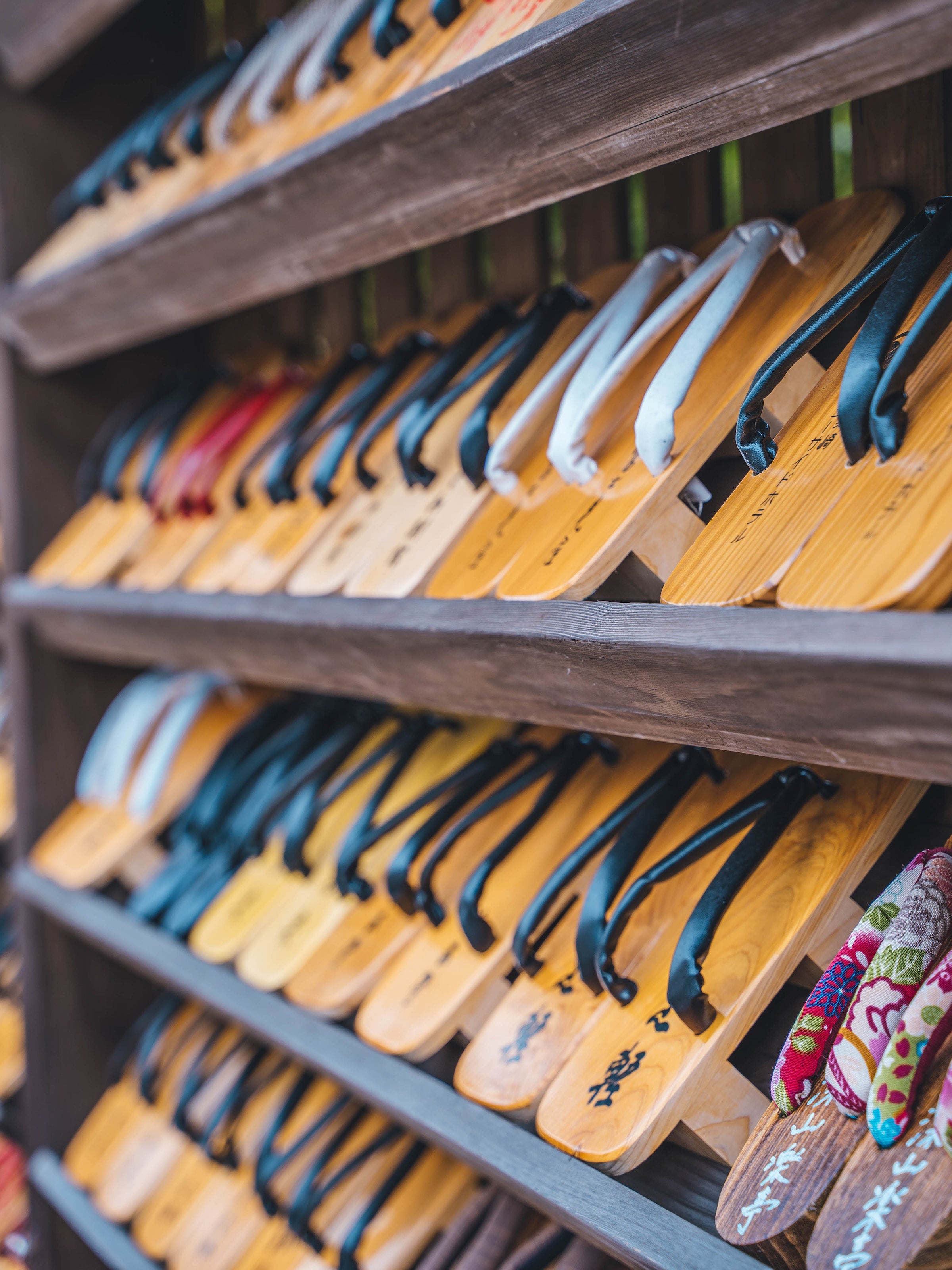
Geta are sandals that consist of a wooden board called "dai" that serves as the sole, topped by two wooden supports called "ha" or "teeth" that raise the sole off the ground. The geta are held on the foot by cloth or leather straps called "hanao" that pass between the big toe and the second toe. Geta are often worn with kimonos and other traditional Japanese clothing.
They help keep feet dry when walking on wet or dirty surfaces because of their elevation. Geta vary in size, shape and style, depending on the occasion, gender and age of the wearer. There are also different kinds of geta such as Tengu geta which have a single central "ha" instead of two. They are more difficult to wear and are often associated with tengu demons in Japanese mythology.
11. Hanten

The hanten is a short quilted jacket similar to the happi but more like a winter garment. The jacket is equally popular with men and women due to its great comfort and easy to wear form. It is most often made of cotton or silk and padded with cotton or absorbent cotton to provide thermal insulation. Usually worn over a kimono or more modern clothing.
The hanten often has patterns and colors that vary depending on the region and representing the Japanese culture. The jacket has a rectangular shape with wide sleeves and can be opened or closed with buttons or cords located on the front of the jacket. In short, it is an excellent jacket that Japanese people like to wear during winter because of its comfort and materials that offer protection against the cold.
12. Eboshi
The eboshi is an ancient traditional hat worn mainly by men during the feudal era of Japan. It is made from stiff cloth, often linen or black silk to maintain its distinctive shape and good fit. The shape of the eboshi varies slightly depending on the rank and social status of the wearer, but it is usually conical or pointed, with a flat or slightly curved top.
The eboshi was once worn in daily life and in official ceremonies, but nowadays it is mainly used in traditional events, ceremonies and historical reenactments. It is also worn by actors in Noh theater, a classical Japanese dramatic art. The actors wearing it represent most often the Japanese nobility but also samurais or shinto priests.
13. Yukata

A yukata is a type of traditional Japanese clothing, similar to a kimono, but lighter and more casual. It is usually worn by men, women and children during the summer months, at festivals and cultural events, or as a casual garment at home. It is similar in design to the kimono, with wide sleeves and a rectangular shape, but is usually shorter and less formal.
The yukata is worn with an obi around the waist to hold the garment in place, men usually wear a narrower and simpler obi than women. The yukata is often completed with geta or zori but also different accessories like sensu (folding fans). In short, the yukata is a comfortable and light variant of the kimono for summer events like matsuri.
14. Kamishimo

The kamishimo is a garment that was mainly worn during the Edo period (1603-1868) by samurai and members of the ruling class. The kamishimo was worn on formal occasions and ceremonies, such as audiences with the shogun or other members of the ruling class. It symbolizes the wearer's social rank and status and is designed to give an impression of authority and dignity.
It consists of two main parts: the kataginu and the hakama. The kataginu is a sleeveless T-shaped vest, which is worn over a kimono. It is characterized by rigid and wide triangular shoulder pads, called "tsuma", which stand on the shoulders. As seen before the hakama is a wide pleated skirt-like pants, which is worn over the kimono and is tied at the waist with cords.
15. Montsuki
Montsuki is a type of Japanese kimono that is characterized by the presence of a mon, or family emblem, on the fabric. The mon is a heraldic symbol that represents the wearer's family or clan and is often used to show membership and social status. The montsuki is usually worn by men on formal occasions and ceremonies, such as weddings, funerals and Japanese theater events.
The montsuki is usually made from high quality materials such as silk, and has simple patterns and colors. The mons are applied to the fabric using dyeing or embroidery techniques, and their number and placement may vary depending on the level of formality of the event and the rank of the wearer. A formal montsuki usually has several mons, located on both shoulders.
Conclusion
In conclusion, traditional Japanese men's clothing reflects a rich culture and complex history that has been maintained and adapted over time. These iconic garments, combining beauty, functionality and symbolism, continue to play an important role in preserving Japanese cultural heritage and expressing national identity. Whether for ceremonies, festivals or simply for the pleasure of immersing oneself in the past, Japan's traditional men's clothing offers a unique and authentic experience for those who wear it and those who admire it.

